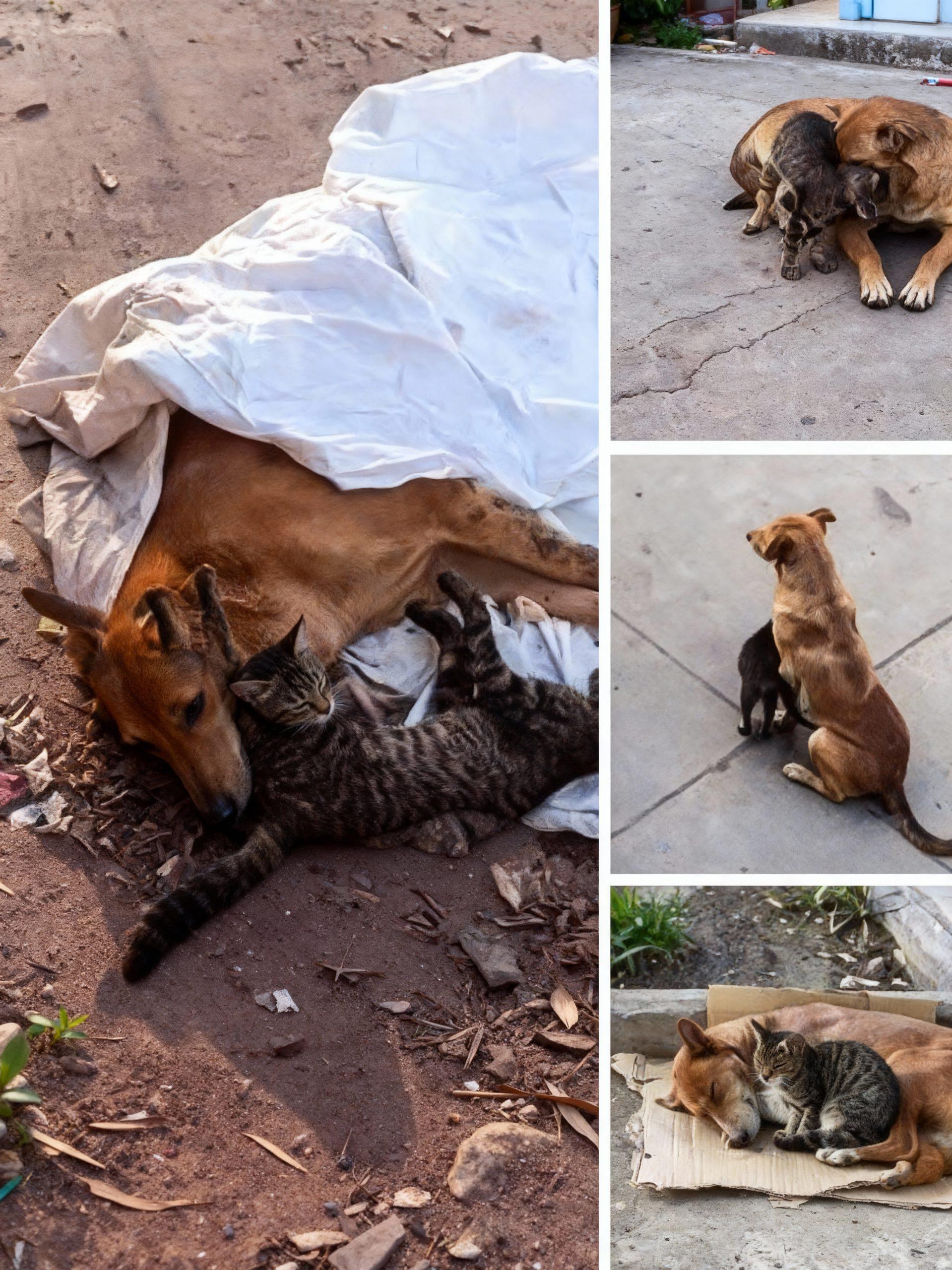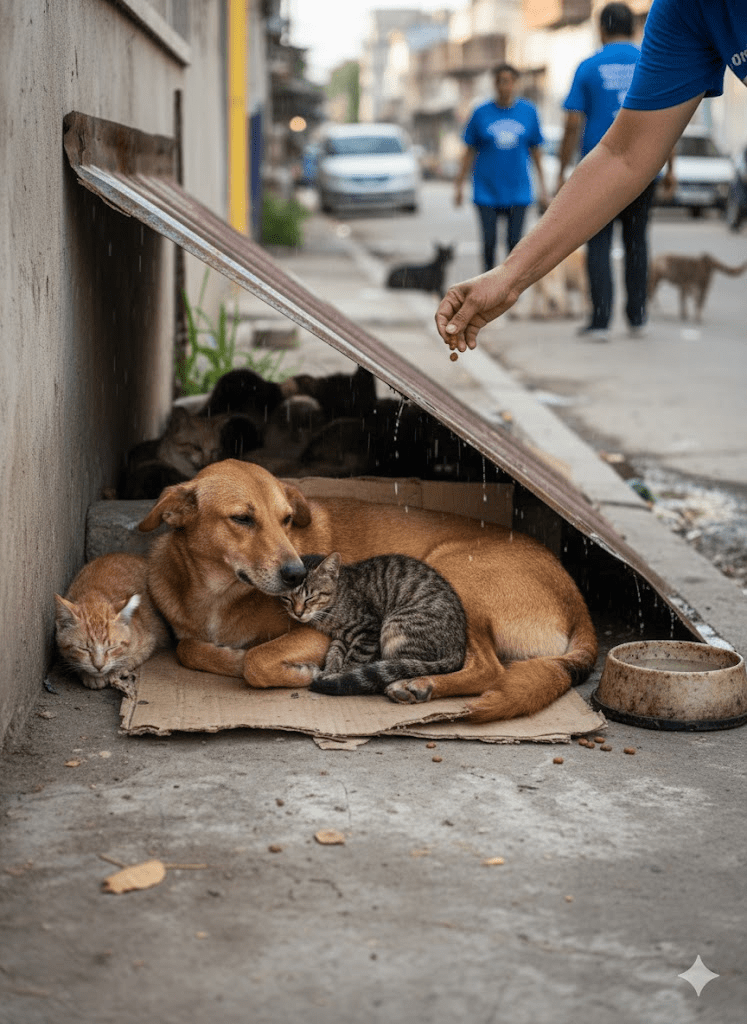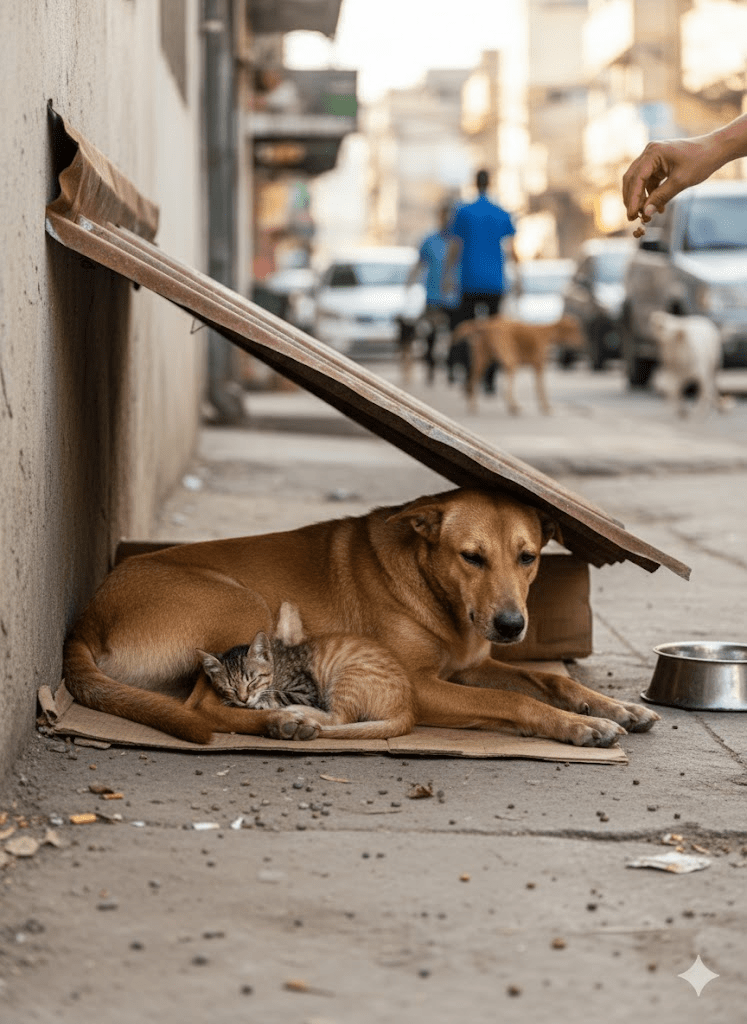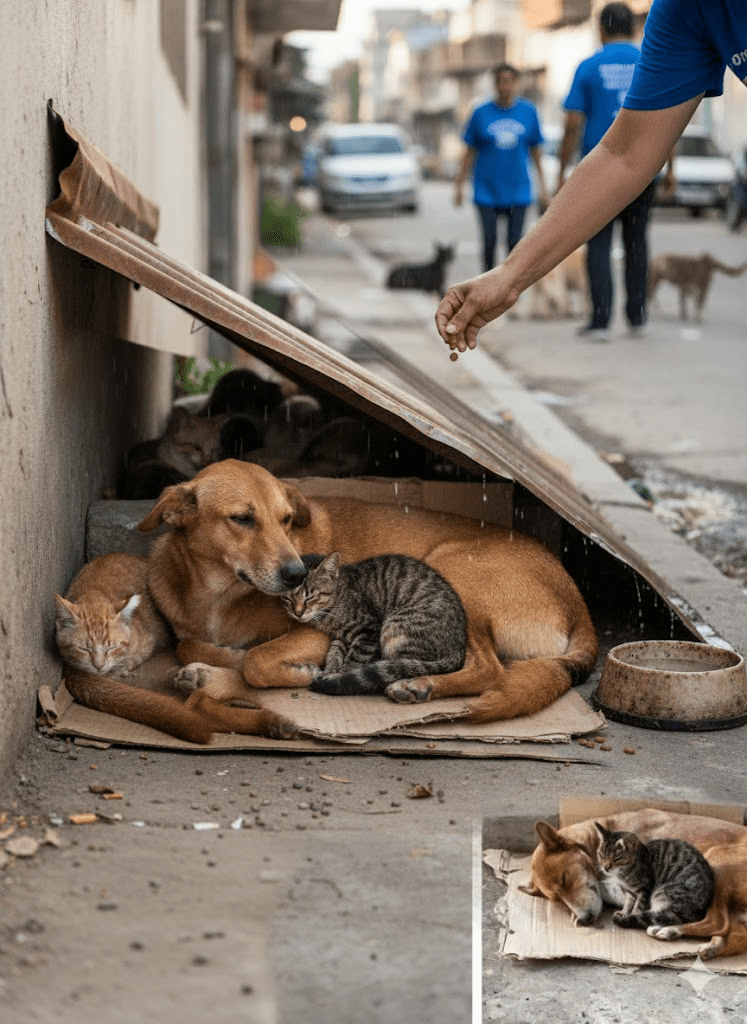In the bustling, often unforgiving environment of urban streets, where survival is a daily struggle, extraordinary bonds can form between the most unexpected individuals. Far from the curated lives of pampered pets, street animals navigate a world of scarcity, danger, and uncertainty. Yet, amidst these harsh realities, moments of profound connection and mutual support emerge, challenging our perceptions of interspecies relationships. The accompanying image collage beautifully captures such an instance: a large, protective street dog nestled closely with a small, striped tabby kitten. In one frame, they are seen sharing a makeshift bed under a white sheet, the dog’s large paw gently resting near the kitten. In another, they huddle together on concrete, seeking warmth and solace. Further images depict the dog watching over the kitten, and in a particularly poignant shot, both animals are asleep on a piece of cardboard, illustrating a deep trust and reliance on one another. These visuals are not just charming; they are a powerful testament to the inherent need for companionship and security that transcends species barriers, particularly in the face of adversity. This article delves into the fascinating world of street animals, exploring the dynamics of their unique friendships, the challenges they face, and what these heartwarming interactions can teach us about empathy, resilience, and the universal language of connection.

One of the most compelling aspects of street animal companionship is the sheer necessity that often underpins these relationships. Unlike domestic animals that have their basic needs met by humans, street animals must constantly forage for food, seek shelter from the elements, and protect themselves from dangers like traffic, disease, and human cruelty. In such an environment, an ally, regardless of species, can significantly increase chances of survival. A larger dog might offer protection from predators or aggressive humans, while a smaller, more agile cat might be better at scouting out discarded food in tight spaces. The shared vulnerability fosters a unique form of trust and interdependence. They learn to communicate in ways that transcend their natural instincts, developing a language of mutual respect and understanding. This adaptability highlights a profound survival instinct, demonstrating that when the chips are down, even traditional adversaries can find common ground and form unbreakable bonds.

Moreover, the emotional support derived from these relationships is immeasurable. In a world devoid of consistent human affection, the warmth of another living creature can be a lifeline. The simple act of huddling together for warmth, as depicted in the images, offers not only physical comfort but also a deep sense of security and belonging. This social interaction can mitigate stress and loneliness, which are significant challenges for animals living on the streets. For a young kitten, the presence of a protective dog can mimic the security offered by a mother, providing a crucial sense of safety during its most vulnerable developmental stages. For the dog, the playful antics or quiet presence of a cat can offer companionship and a sense of purpose, alleviating the isolation that often accompanies a solitary street existence. These emotional exchanges are a powerful reminder that all sentient beings crave connection and comfort, regardless of their circumstances.

While these stories of interspecies friendships are heartwarming, they also underscore the harsh realities faced by millions of street animals worldwide. Lack of access to proper nutrition, veterinary care, and safe shelter leads to widespread suffering. Organizations and compassionate individuals often step in to provide food, water, and medical attention, but the scale of the problem is immense. The sight of a dog and cat sharing a meal, or seeking shelter together under a piece of corrugated iron, is a poignant reminder of their vulnerability and their reliance on human kindness. These moments, while beautiful, should also serve as a call to action, prompting us to consider how we can contribute to improving the lives of these resilient creatures.

Ultimately, the unlikely friendships forged on the streets offer profound insights into the nature of compassion and survival. They demonstrate that love and companionship are not exclusive to any one species and that the desire for connection is a fundamental aspect of life. These street animals, through their enduring bonds, teach us valuable lessons about resilience, adaptability, and the power of finding solace in unexpected places. Their stories, like the one captured in the evocative images, serve as a moving testament to the indomitable spirit of life and the universal language of affection that transcends all boundaries. They invite us to look beyond superficial differences and recognize the shared humanity—or rather, shared animality—that connects us all in the tapestry of existence. By acknowledging and supporting these animals, we not only extend our kindness but also enrich our own understanding of the world and our place within it.






